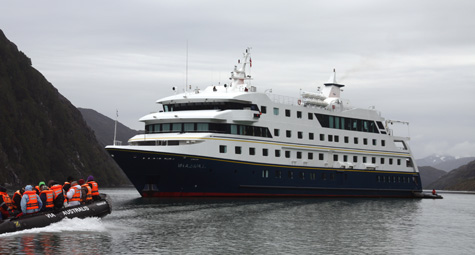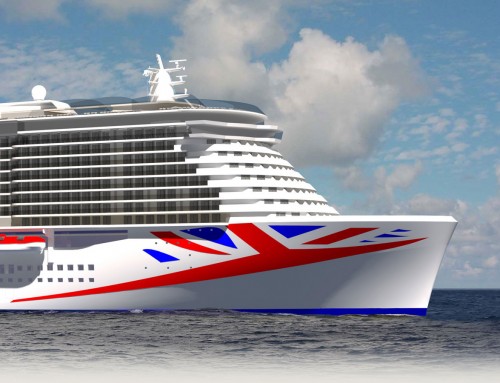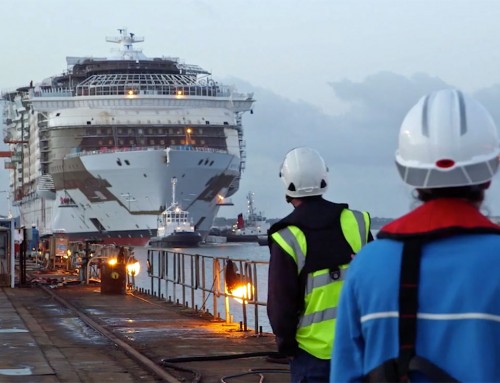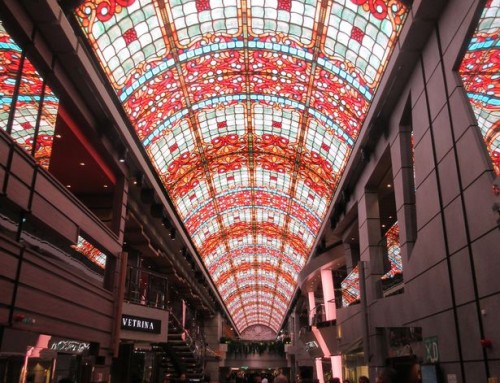 The first thing to realise about expedition ship Via Australis, on which I recently travelled to Cape Horn, is that the name has nothing to do with Australia, except both share the same etymology – from the Latin for “south.”
The first thing to realise about expedition ship Via Australis, on which I recently travelled to Cape Horn, is that the name has nothing to do with Australia, except both share the same etymology – from the Latin for “south.”
The second thing I discovered was just how well this little vessel – a mere 2,716 tons and carrying just 125 passengers – could handle itself in the wild waters of the south Atlantic.
The seas of Drake Passage, between South America and Antarctica, are some of the roughest in the world, and have claimed hundreds of ships and thousands of lives over the centuries. But with the help of a couple of Stugeron (just for insurance, I promise you) I felt no ill-effects as waves crashed over the bow and the ship heeled over in storm-force winds.
The weather might have prevented us going ashore at Cape Horn, but we were soon back in the more sheltered waters of the Beagle Channel and some of the other inlets between the host of islands to the west of Tierra del Fuego.
Via Australis and sister ship Mare Australis spend each week between September and April sailing between Punta Arenas in Chile, and the Argentine port of Ushuaia.
I was the only Brit on board during my three-day voyage – not surprising given the time it takes to get almost from one end of the earth to the other. My journey involved three flights: from Heathrow to Paris, then a 13-hour marathon to Buenos Aires, where I spent a couple of days before the four-hour hop to Ushuaia.
Yes, just flying from the north of Argentina to the south takes at least as long as flying from the UK to Athens, for example.
But it was well worth the effort, and most people would take the cruise as part of a longer exploration of the South American continent. For example, the couple from North Carolina who sat next to me at dinner had spent a few days touring the Atacama desert and the couple from Hamburg across the table were carrying on to their daughter’s wedding in Chile.
Although most of the friendly crew and the enthusiastic expedition staff were Chilean, there were no language problems – the informative lectures on everything from Charles Darwin to the local wildlife were given in both Spanish and English, and on guided excursions ashore and on the Zodiac inflatables, arrangements were made to cater for French, German and Portuguese speakers.
There’s nothing austere about life on board the Via Australis. The Patagonia restaurant is down on Deck One, where breakfast and lunch are served buffet-style. Dinner is a three-course waiter-service affair and the food was of excellent quantity. All drinks, with meals and in the bars, are complimentary (or rather included in the fare), so there was no excuse not to sample the formidable Pisco Sour cocktails.
 Coffee and sandwiches are served in the Yamana Lounge (above) on Deck 3 for early-risers – essential for early-morning excursions – and the main bar was in the Sky Lounge on Deck 4. Up above is the Panoramic Deck, perfect for taking in the sights and sounds, provided you’re wrapped up against the chilly weather.
Coffee and sandwiches are served in the Yamana Lounge (above) on Deck 3 for early-risers – essential for early-morning excursions – and the main bar was in the Sky Lounge on Deck 4. Up above is the Panoramic Deck, perfect for taking in the sights and sounds, provided you’re wrapped up against the chilly weather.
A voyage on Via Australis doesn’t have the glitzy entertainment of the cruise ships plying their trade in the Mediterranean and the Caribbean, but it’s not all serious stuff either. Alongside the talks about explorers and history, there was tango dancing and a fascinating introduction to Chilean wine.
The three days and nights on board went all-too quickly, and then it was time for the marathon journey back to the UK. But for all the flying, it was well worth it. I can’t wait to return.
Fancy it yourself? Take a look at www.australis.com






Leave A Comment